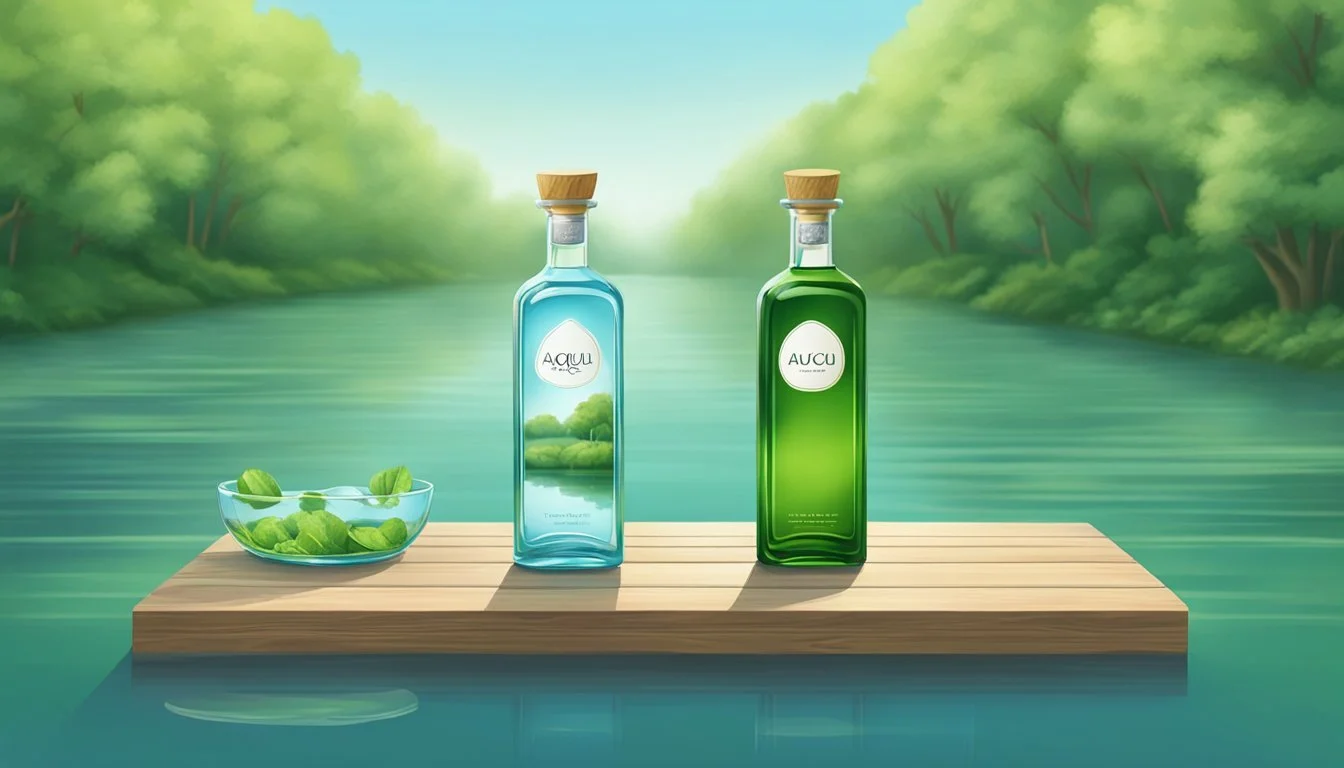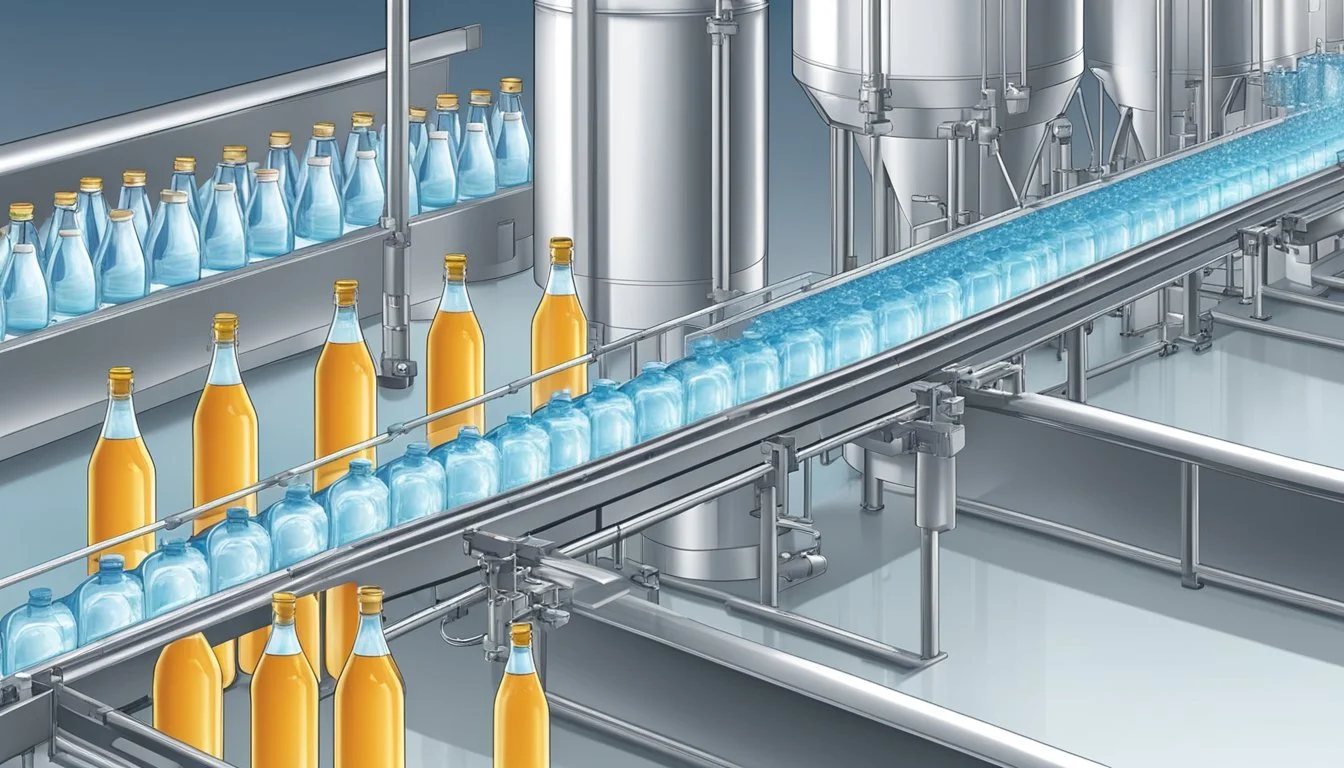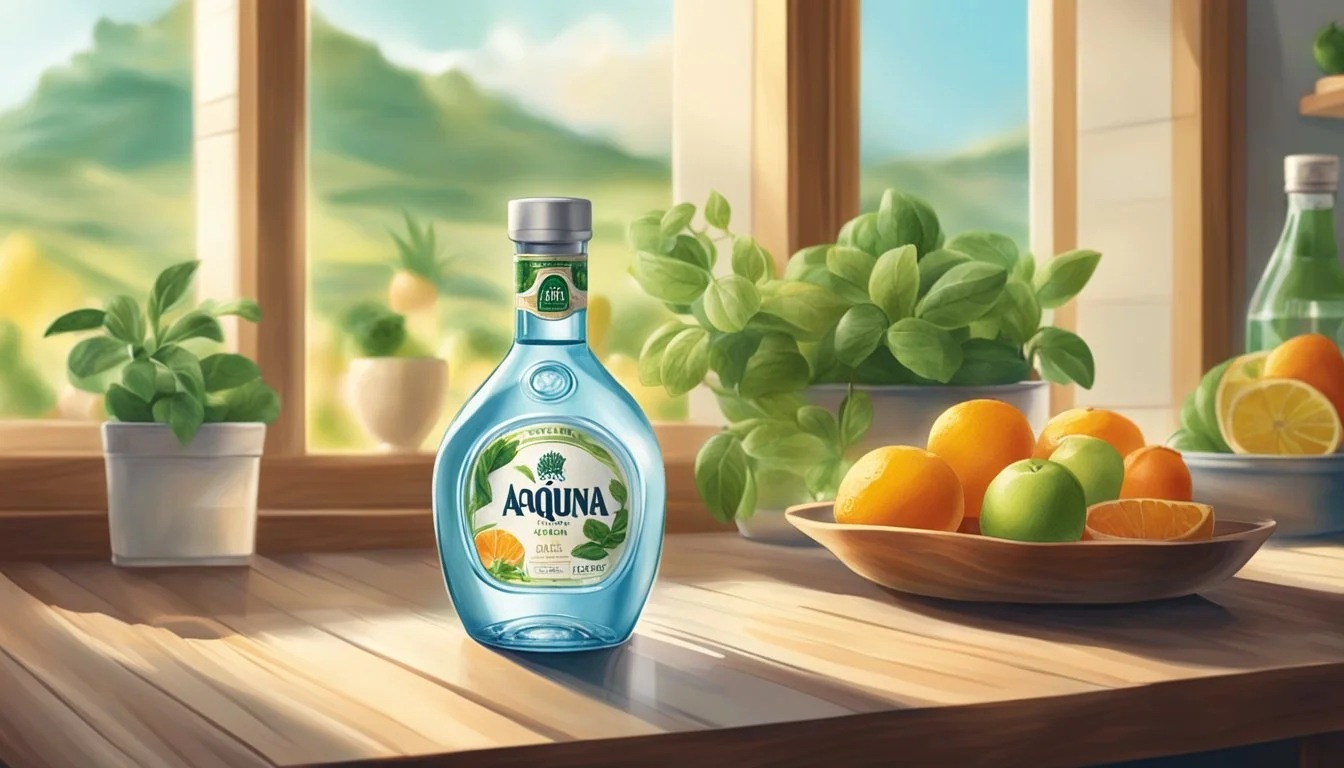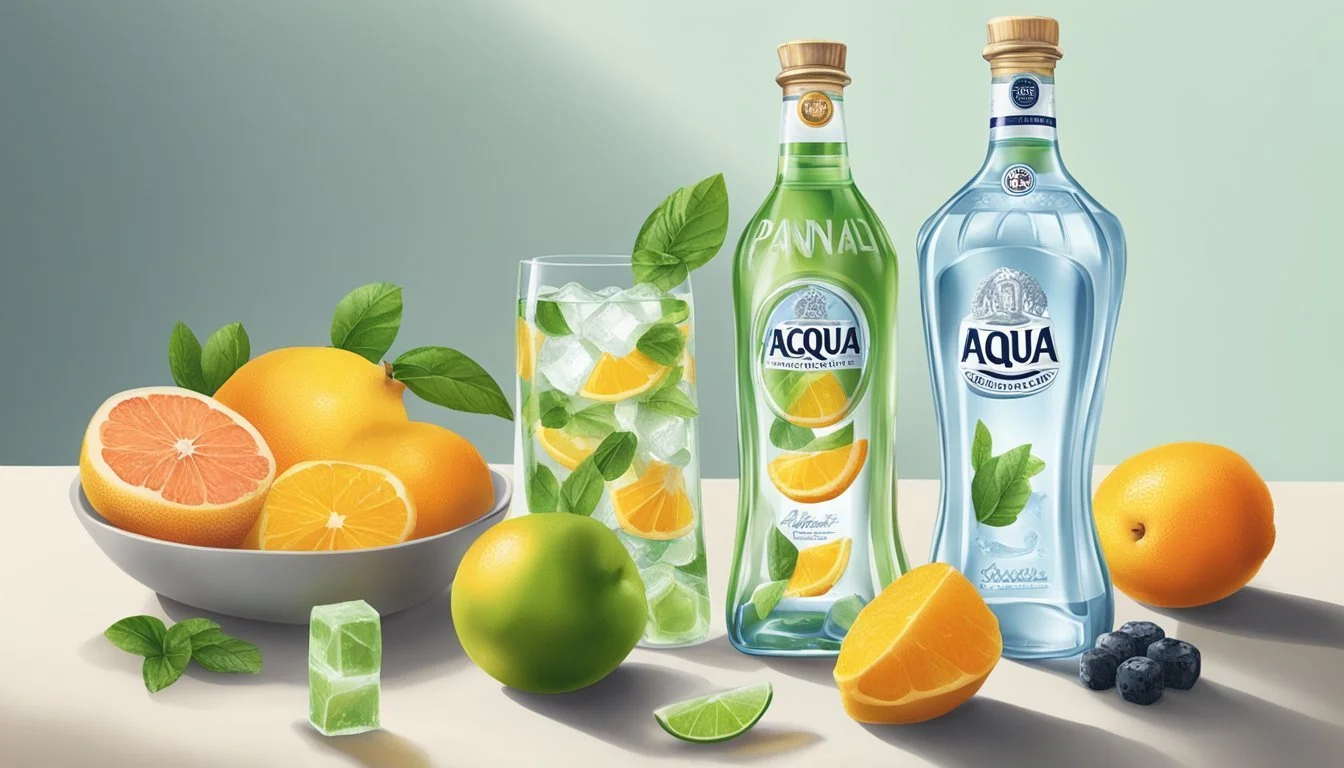Acqua Pana vs. Augi
A Comparative Review of Bottled Water Quality
When it comes to choosing the best bottled water, the debate between Acqua Panna and Augi is a compelling one. Acqua Panna stands out due to its naturally alkaline pH and its sourcing from Tuscany’s pristine springs. This gives it a unique, smooth taste favored by many.
On the other hand, Augi is a purified water from the Leesburg, Va., municipal supply. While some note a slight sulphuric taste that can occasionally border on fishy, it is still a relatively popular choice for its crispness.
Ultimately, the preference between Acqua Panna and Augi depends on individual taste and quality standards. Acqua Panna's premium spring source and unique mineral composition may make it the superior choice for those seeking high-quality bottled water, whereas Augi offers a straightforward, purified option for everyday hydration.
History and Origin of Acqua Panna and Augi
Acqua Panna and Augi are two distinct bottled waters with rich histories. They trace their origins to different regions, each being influenced by its unique environment.
Acqua Panna: From Tuscany to the Table
Acqua Panna originates from Tuscany, Italy. The water's source is in the hills surrounding Villa Panna, where it has been collected since 1564. Named after the villa itself, it is drawn from a natural spring.
The Medici family, prominent in Florentine history, favored this water. Bottling began in 1880, making it one of the earliest bottled still waters. Its taste is smooth and velvety, often noted for being subtly sweet without a strong mineral flavor. Today, it's celebrated as a premium choice in fine dining.
Augi: Tracing the Path to the Market
Augi water comes from a distinct aquifer, renowned for producing mineral-rich water. This water is sourced from a natural spring, which ensures its purity and refreshing taste.
First introduced to the market in the late 20th century, Augi has quickly gained a reputation for its crisp and clean profile. The geological conditions of its source contribute to its distinctive mineral content, making it popular among those seeking high-quality mineral water. While not as old as Acqua Panna, Augi upholds a strong tradition of excellence in bottled water.
Source and Composition
The quality of Acqua Panna and Augi bottled waters can be significantly influenced by their sourcing and mineral compositions. Understanding the origin and the specific mineral profiles of these waters provides key insights into their distinct characteristics.
Evaluating the Aquifers
Acqua Panna sources its water from a natural spring in Tuscany, Italy. This spring is renowned for its high purity and natural filtering process that occurs through the underground aquifers. The geological formations in this region contribute to its unique mineral content.
Augi comes from the municipal water supply in Leesburg, Virginia. While it undergoes purification processes to ensure safety and quality, the origin from a municipal source may influence its overall composition.
Comparison Table:
Attribute Acqua Panna Augi Source Tuscany, Italy Leesburg, Virginia Natural Filtering Yes No
Mineral Profile Analysis
Mineral content is a crucial factor in determining the taste and health benefits of bottled water. Acqua Panna contains a balanced mix of minerals such as calcium, magnesium, and potassium, thanks to its natural spring source.
Calcium: Acqua Panna is known for its higher calcium levels, essential for bone health.
Augi, being sourced from a municipal supply and purified, may have fewer naturally occurring minerals. While it is safe and clean, it may lack the specific mineral profile found in natural spring water.
Comparison Table:
Mineral Acqua Panna Augi Calcium 31 mg/L <5 mg/L Magnesium 7 mg/L <1 mg/L Potassium 1 mg/L <1 mg/L
PH Level and Alkalinity
PH level and alkalinity can affect both the taste and potential health benefits of bottled water. Acqua Panna has a pH level of approximately 8.0, making it slightly alkaline. This can neutralize acidity in the body and improve hydration efficiency.
Augi typically has a neutral pH of around 7.0 due to its purification process. The pH level is more consistent but may not offer the same alkaline benefits.
Comparison Table:
Attribute Acqua Panna Augi pH Level 8.0 7.0 Alkalinity Moderate Low
The differences in source, mineral content, and pH levels play a pivotal role in the preference for either Acqua Panna or Augi.
Filtration and Bottling Process
Acqua Panna and Augi are bottled waters that employ distinct methods for filtration and bottling, impacting taste and environmental footprint.
Filtration Techniques Employed
Acqua Panna boasts a filtration process that emphasizes the natural journey of water through geological formations. Originating in Tuscany, the water filters through limestone and sandstone over 13 years, acquiring minerals that enhance its taste. No additional treatment is applied, preserving its mineral profile and purity.
Augi employs modern techniques, including reverse osmosis, which effectively removes impurities. This method ensures the water is pure but may result in the removal of some natural minerals. Augi may also include additional filtration stages to maintain consistent quality across different batches.
Sustainability in Bottling
Acqua Panna emphasizes its commitment to sustainability through the use of recyclable glass bottles. Their bottling process ensures that the water is bottled at the source, reducing transportation impacts. The use of high-quality glass ensures minimal leaching and preserves the water's purity.
Augi offers both glass and plastic bottles, with efforts to utilize recyclable and recycled materials. Their bottling facilities are optimized for minimal environmental impact, incorporating practices such as water conservation and energy efficiency. Augi's plastic bottles are made from PET, which is fully recyclable, though less environmentally friendly than glass.
Both brands strive to strike a balance between maintaining the water's quality and reducing their environmental footprint through innovative bottling solutions.
Taste and Flavor Profile
Acqua Panna and Augi each present unique tasting experiences, catering to specific preferences. Acqua Panna is known for its smooth and refined flavor, while Augi offers a distinctive profile that appeals to a different palate.
The Flavor of Hydration
Acqua Panna is celebrated for its subtle, well-balanced taste.
Without overpowering mineral flavors, Acqua Panna provides a refreshing experience, free from bitterness. Its source in the hills of Tuscany contributes to its soft, accessible character.
Augi brings a contrasting flavor profile.
Often described as crisp and clean, Augi's water has a slight mineral undertone, adding depth. While not as velvety as Acqua Panna, it remains smooth on the palate and equally free of bitterness.
Character and Texture
Acqua Panna's texture is often highlighted as one of its key attributes. The water’s journey through the sun-drenched hills of Tuscany infuses it with a velvety softness.
This results in a luxurious mouthfeel, making hydration a pleasant experience without any harsh edges.
Augi's water character differs in its texture. Though it lacks the same velvety quality, it compensates with a more robust and crisp mouthfeel.
The slight mineral presence contributes to a refreshing sensation, making it a solid choice for those who prefer a clearer, crisper texture.
Both brands offer distinctly enjoyable experiences, tailored to different preferences.
Health Benefits and Hydration
Acqua Panna and Augi bottled waters offer unique health benefits and effective hydration, crucial for maintaining overall well-being.
Hydration Efficiency
Acqua Panna, sourced from the hills of Tuscany, boasts a smooth texture and balanced mineral composition, allowing for efficient hydration. Its neutral pH level of about 8.0 aids in balanced water absorption, promoting optimal hydration and bodily function. Augi water, with its low-mineral content and pristine purity, efficiently hydrates by providing essential water without the heavy mineral load that can weigh down the body. This is particularly beneficial for individuals seeking a light and refreshing hydration experience. Both waters ensure adequate hydration by delivering clean, high-quality water, aiding in maintaining overall health and energy levels.
Essential Minerals for Health
Acqua Panna is rich in minerals such as calcium and magnesium, which are essential for bone health and metabolic activities. These minerals are naturally present due to its mountainous origin. Augi water, while lighter on minerals, still provides sufficient levels of essential elements like bicarbonates, promoting smooth digestion and electrolyte balance. The neutral pH levels of both waters, around 8.0 for Acqua Panna and slightly lower for Augi, help maintain the body's acid-base balance, which is crucial for various physiological processes. By drinking these waters, individuals can reap the benefits of essential minerals without the excess.
Both Acqua Panna and Augi present valid options for those looking to boost their hydration and mineral intake through high-quality bottled water.
Brand Presence and Consumer Choices
Consumers often choose bottled water based on brand recognition and the specific qualities each brand offers. Acqua Panna and Augi cater to diverse consumer preferences, influencing market shares and brand loyalty.
Market Analysis of Leading Brands
Both Acqua Panna and Augi have carved out distinct niches in the bottled water market. Acqua Panna, sourced from the Tuscan hills of Italy, is renowned for its crisp, smooth taste and high-end appeal.
Augi, while less known globally, has gained traction for its focus on sustainability and local sourcing.
Market Share: Acqua Panna holds a significant share of the premium bottled water market, frequently found in fine dining settings. Augi targets eco-conscious consumers and local markets, relying on its environmentally-friendly practices for growth.
Consumer Preferences and Trends
Consumer choices are influenced by factors such as taste, environmental impact, and packaging.
Taste: Acqua Panna is often preferred in fine dining due to its velvety texture and balanced mineral composition. Augi, with its fresh and clean taste, appeals to health-focused consumers.
Sustainability: Augi’s commitment to eco-friendly practices has boosted its popularity among younger, eco-conscious consumers. Acqua Panna’s glass bottles also cater to sustainability concerns but may appeal more to premium customers.
Packaging & Availability: Acqua Panna’s availability in upscale restaurants and stores reinforces its luxury image. Augi’s local distribution and recyclable packaging resonate with shoppers looking for sustainable choices.
In both cases, personal preference drives consumer behavior, showing a clear divide between those seeking luxury and those prioritizing sustainability.
Environmental Considerations and Sustainability
When comparing Acqua Panna and Augi, it's essential to consider their environmental impact and sustainability efforts. Key factors include their bottling materials, source management, and initiatives to reduce waste.
Assessing the Environmental Footprint
Acqua Panna sources its water from the Tuscan Apennines in Italy. The brand uses glass and PET plastic bottles, both of which are recyclable. Glass, while heavier, is more eco-friendly in terms of reuse.
Augi, on the other hand, sources its water from Leesburg, Virginia, and uses PET plastic bottles. PET plastic is lightweight but contributes to plastic waste if not properly recycled.
Both brands face challenges in minimizing their carbon footprints due to transportation and production processes. Transportation, especially over long distances, increases greenhouse gas emissions.
Sustainability Efforts by Brands
Acqua Panna has committed to reducing its environmental impact through various sustainability efforts. The brand emphasizes responsible water management and has initiatives to ensure the eco-friendliness of its bottling processes.
Augi focuses on local sourcing and reducing transportation emissions. By bottling water locally, Augi aims to minimize the environmental impact associated with extensive shipping.
Both brands are also investing in recycling programs. Acqua Panna promotes the use of recyclable materials and has initiatives to encourage consumers to recycle. Augi promotes similar efforts to reduce plastic waste.
For consumers concerned about environmental issues, Acqua Panna and Augi provide viable options with distinct strategies aimed at sustainability.
Comparative Analysis
When comparing Acqua Panna and Augi bottled waters, it is essential to consider the source, taste, pH levels, and packaging. Each brand offers unique characteristics that cater to different consumer preferences.
Acqua Panna vs. Augi: A Direct Comparison
Source and Filtration Process:
Acqua Panna: Sourced from the hills of Tuscany, Italy. Naturally filtered through the earth, giving it smoothness and a well-rounded taste.
Augi: Purified water from the Leesburg, Va., municipal supply. It undergoes a treatment process to remove impurities, sometimes leading to a slight sulphuric taste.
pH Levels:
Acqua Panna: Maintains a neutral pH around 8.0. This balance may appeal to those looking for alkaline water.
Augi: Typically exhibits a pH level close to 7.0, considered ideal for standard drinking water preferences.
Taste Profile:
Acqua Panna: Known for its smooth, velvety texture with a subtle sweetness and absence of strong mineral flavors.
Augi: May have a slight sulphuric taste, which some find unique, although it borders on fishy.
The Bottom Line for Consumers
Convenience and Packaging:
Acqua Panna: Known for its sophisticated packaging with a minimalistic design and a striking orange label that stands out.
Augi: Less focused on premium presentation, which might appeal to consumers seeking more practical and less visually-driven choices.
Health Considerations:
Acqua Panna: Ideally suited for those preferring naturally sourced, alkaline water.
Augi: Suitable for consumers who prioritize practicality and a neutral pH without a specific preference for natural vs. purified sources.
Access and Availability:
Acqua Panna: Readily available in upscale retailers and online, often at a higher price point.
Augi: Generally found in local supermarkets, providing a cost-effective option.
Evaluating both options involves considering their unique qualities related to taste, health benefits, and convenience to find the right fit for individual preferences.








